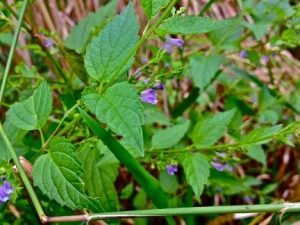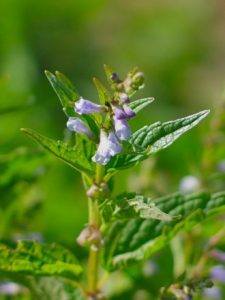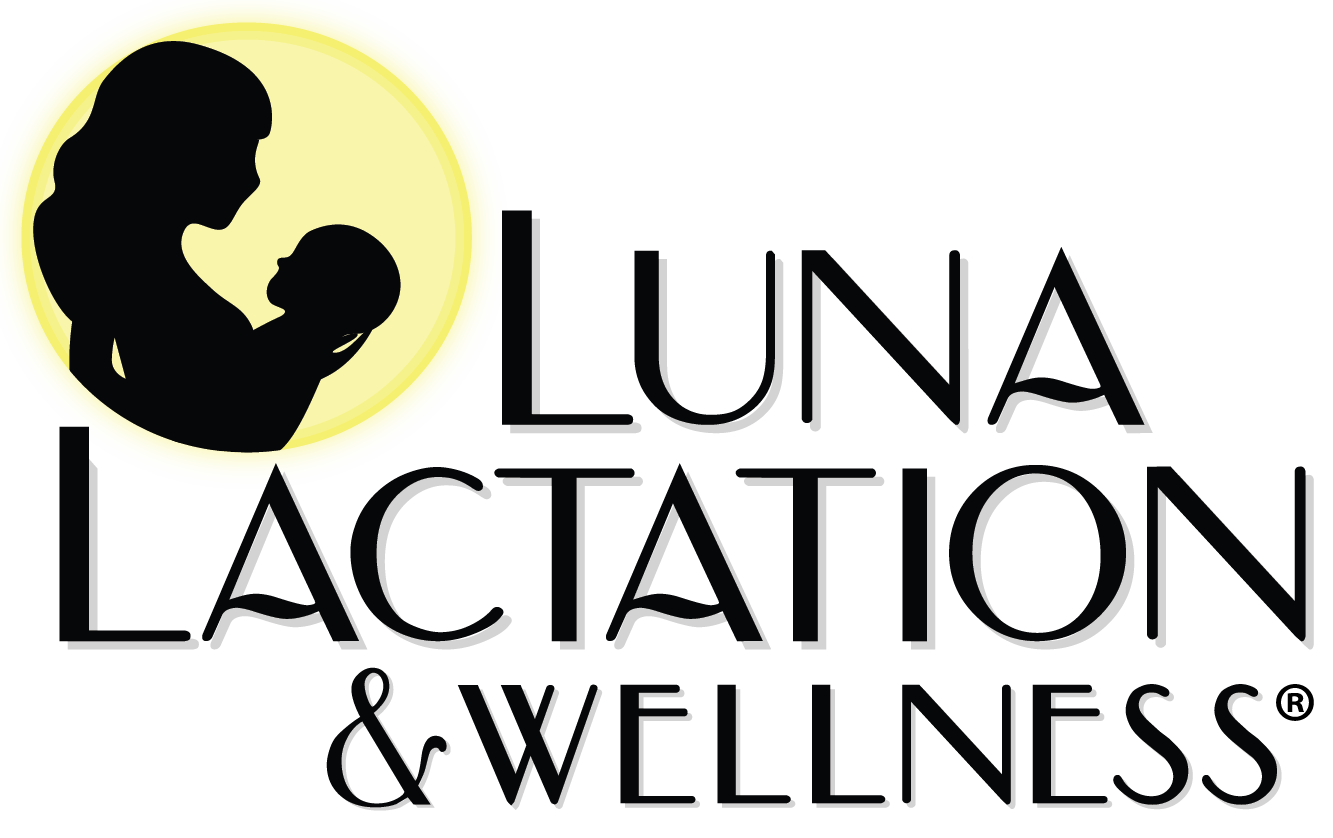A Tale of Two Skullcaps
© Melissa Cole, MS, IBCLC
There are 300-400+ species of Skullcaps in the Scutellaria genus, which is part of the flowering mint family. Scutellaria means, “little dish”, based on the shape of the flower. The common name, Skullcap, may have been chosen because the flowering part looks like a hat or medieval helmet. Not all species are used medicinally. Skullcap is also easily adulterated which is why quality sourcing is paramount. I would like to focus on two types of therapeutic Skullcap: American Skullcap (Scutellaria lateriflora) and Chinese Skullcap (Scutellaria baicalensis). The current global pandemic, Covid-19, has many individuals turning to botanical support. At this time, nervous system and immune system strengthening is vital. I invite you to explore these two plant allies on an energetic and pharmacological level.

Chinese Skullcap (Scutellaria baicalensis)
- Chinese Skullcap is known for its broad-spectrum antiviral properties. It inhibits viral replication, suppresses viral gene expression, inhibits/reduces cytokine cascades, and has many other viricidal actions1-4.
- Plant part used: Synergistic with other antivirals (like licorice)
- Dosing: Doses to be divided and take 3-4x/day. 3-9 g/day powdered herb/capsule, 1-6 ml tincture/day (can be increased at times of acute infection with guidance)5.
- Contraindications: gastric irritation, can increase bioavailability of some pharmaceuticals (blood pressure and blood sugar meds particularly). Can increase drug and herb uptake in the body5.
- Plant compounds: baicalein, wogonin, baicalin, oroxylin, scutellarin, luteolin, melatonin, serotonin, etc 5-7
- Energetics: bitter, cooling, expels dampness5

American Skullcap (Scutellaria lateriflora)
- American Skullcap is good for nervous fear, restless sleep, spasms, inability to pay attention, dull frontal headaches, nervous stomach, exhaustion, weakness after illness. Improves mood without being a sedative. It is a nervine and antispasmodic 8-11.
- Plant part used: Leaf, aerial parts
- Dosing: 3-6 g/day leaf/infusion, 3-9mL tincture daily. Divide doses over 3-4x/day 8
- Contraindications: mild gastric irritation with high doses, may have an additive effect on CNS depressant medications and sedatives
- Plant compounds: baicalein, baicalin, scutellarin, cinnamic acids, sesquiterpenes, melatonin, serotonin, etc 8,12
- Energetics: bitter, cooling, expels dampness 5,13
Sourcing to consider:
- Mountain Rose Herbs https://www.mountainroseherbs.com/
- Luna Lactation and Wellness https://www.lunalactation.com/
- 1st Chinese Herbs: https://1stchineseherbs.com/
- Vital Compass https://www.thevitalcompass.com/
- There are many other quality sources for herbs. Do your homework. Buy from ethical, trusted sources.
Please note* I would consider these two herbs compatible for most adults and during lactation. However, there are considerations regarding herb-drug interactions and individualized health concerns. This post is not intended to be a substitute for professional herbal support or medical guidance.
- Wang ZL, Wang S, Kuang Y, Hu ZM, Qiao X, Ye M. A comprehensive review on phytochemistry, pharmacology, and flavonoid biosynthesis of Scutellaria baicalensis. Pharm Biol. 2018;56(1):465-484.
- Błach-Olszewska Z, Jatczak B, Rak A, et al. Production of cytokines and stimulation of resistance to viral infection in human leukocytes by Scutellaria baicalensis flavones. Journal of interferon & cytokine research : the official journal of the International Society for Interferon and Cytokine Research. 2008;28(9):571-581.
- Xu G, Dou J, Zhang L, Guo Q, Zhou C. Inhibitory effects of baicalein on the influenza virus in vivo is determined by baicalin in the serum. Biological & pharmaceutical bulletin. 2010;33(2):238-243.
- Zhao Q, Chen XY, Martin C. Scutellaria baicalensis, the golden herb from the garden of Chinese medicinal plants. Sci Bull (Beijing). 2016;61(18):1391-1398.
- Buhner SH. Herbal antivirals : natural remedies for emerging resistant and epidemic viral infections. North Adams, MA: Storey Publishing; 2013.
- Nagai T, Suzuki Y, Tomimori T, Yamada H. Antiviral activity of plant flavonoid, 5,7,4′-trihydroxy-8-methoxyflavone, from the roots of Scutellaria baicalensis against influenza A (H3N2) and B viruses. Biological & pharmaceutical bulletin. 1995;18(2):295-299.
- Seong RK, Kim JA, Shin OS. Wogonin, a flavonoid isolated from Scutellaria baicalensis, has anti-viral activities against influenza infection via modulation of AMPK pathways. Acta Virol. 2018;62(1):78-85.
- Mills S, Bone K. The Essential Guide to Herbal Safety. St. Louis, Mo.: Elsevier Churchill Livingstone; 2005.
- Awad R, Arnason JT, Trudeau V, et al. Phytochemical and biological analysis of skullcap (Scutellaria lateriflora L.): a medicinal plant with anxiolytic properties. Phytomedicine : international journal of phytotherapy and phytopharmacology. 2003;10(8):640-649.
- Brock C, Whitehouse J, Tewfik I, Towell T. American Skullcap (Scutellaria lateriflora): a randomised, double-blind placebo-controlled crossover study of its effects on mood in healthy volunteers. Phytother Res. 2014;28(5):692-698.
- Wolfson P, Hoffmann DL. An investigation into the efficacy of Scutellaria lateriflora in healthy volunteers. Altern Ther Health Med. 2003;9(2):74-78.
- Hoffmann D. Medical herbalism : the science and practice of herbal medicine. Rochester, Vt.: Healing Arts Press; 2003.
- Tilgner S. Herbal medicine : from the heart of the earth. 1st ed. Creswell, OR: Wise Acres; 1999.


